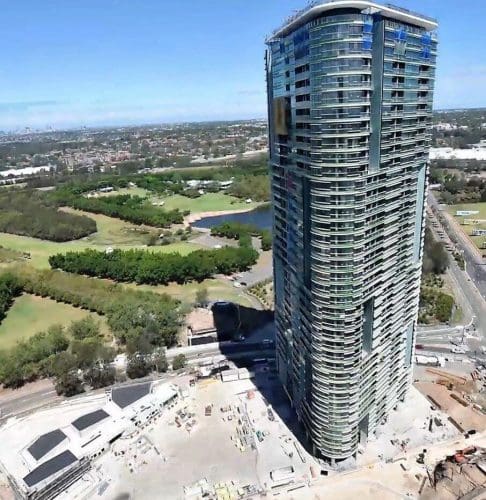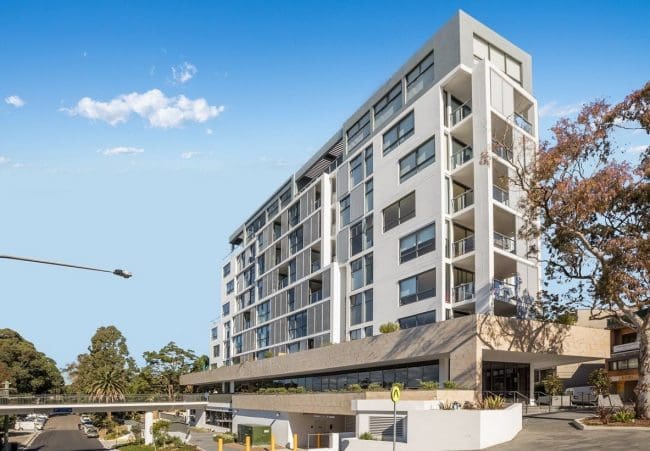OK, nobody died, but this was a pretty grim Christmas for the residents and owners of the Opal Tower in Sydney’s Olympic Park.
Many of them were evacuated from their homes due to cracking in one corner of the building, allegedly from a faulty supporting wall on the 10th floor all the way up to the 35th.
Some residents have been allowed home but others are being put up in hotels while building engineers investigate the cause and the potential for further damage.
Planning minister Anthony Roberts was quick to respond, promising a full investigation. Strata Minister Matthew Kean was at the gym or, to be more accurate, issuing warnings to be careful about signing gym memberships with punitive escape clauses.
This is what we get for having our homes regulated by a department that’s also in charge of broken kettles and dodgy car mechanics.
This is just one of the holes in strata protections and there’s a lot to come out of the Opal cracks. Notwithstanding the specific cause of the shifting, its potential for further damage and the likely cures, there’s a whole range of issues that need closer examination.
For a start, will the government’s much-vaunted 2 per cent defects bond come even close to covering the cost of fixing this? Or will residents face long and bitter court battle – as others have in the past – to get the apartments they paid for (you know, the kind that don’t start sinking a few months after you move in.)
Of course, there’s also the chance that the developers, Ecove, and builders will do the right thing and fix it, without qualification or complaint. Ecove have certainly done the right thing so far, putting the worst-affected residents into hotels until their apartments can be declared fit for habitation … or otherwise.
But already there has been blame shifting and finger-pointing, with an Ecove spokesman quoted as saying the responsibility for the build quality lies with Icon, the builders. Meanwhile the responsibility for public alarm apparently lies with the media.
The Guardian reports that Bassam Aflak, a director of Ecove, said the Opal Tower at Sydney Olympic Park was “absolutely” safe for residents and criticised “sensational” media reporting.
I guess that would include us, then. Mr Aflak also told the Guardian that the Opal was still “a high-quality building” and it was only a news story because “it happened over the Christmas break”.
Really? If we are going to point fingers, let’s start with the whole murky issue of certification. At some point, some individual or group of professionals signed off on a part of the structure that we can clearly now see was not fit for purpose.
It may be that there was an unforeseeable flaw that might never have been detected had the cracking not occurred. Even so, we need to know who signed the papers and on what basis they did so.
Cracked buildings are not a new phenomenon. One theory has it that the whole concept of sinking funds, as the maintenance funds used to be known, was based on buildings in the UK literally sinking, having been constructed over old mines.
And owners in beachside suburbs have long known two kinds of settlement – the completion of the purchase and the cracks that inevitably appeared as their block unevenly settled in the sand.
However, once the dust has settled on the current crisis, the Opal’s owners face a fairly bleak short-term future, regardless of how effective the remediation of the building proves to be.
In this age when old news hangs around in the internet like a bad smell, the Opal will long be known as the “cracked” block, and that can only send fissures through property values.
Tenants are already wondering if the cracking is a valid reason for terminating their leases. The answer to that, by the way, is only if your apartment is declared unsafe. However, you might negotiate a rent reduction because of cracked plaster, disruption from repairs and future building work noise.
Investors might already be looking longingly at Airbnb lets (if they are allowed) as their residential rents head south. After all, foreign tourists literally don’t know what they’re getting into until they have signed up.
On the residential letting front, I would imagine that, for the next few years, savvy renters will only go there looking for bargains.
As for owner-occupiers, unless you are prepared to take a significant hit in your property values, you are there for the long haul, at least until it becomes clear that the building isn’t going to fall over any time soon.
If I were on the strata committee at the Opal, there are two things I would be looking for from Ecove, beyond the effective remediation of the fault.
Firstly, I’d want compensation for the loss of value in individual apartments. Then I would want an undertaking from Ecove that they would commit to a significant marketing campaign once the building was fixed to let the world know that it’s safe and sound.
That might make the Opal a rare gem, rather than an investors’ minefield.
A version of this column first appeared in the Australian Financial Review.




